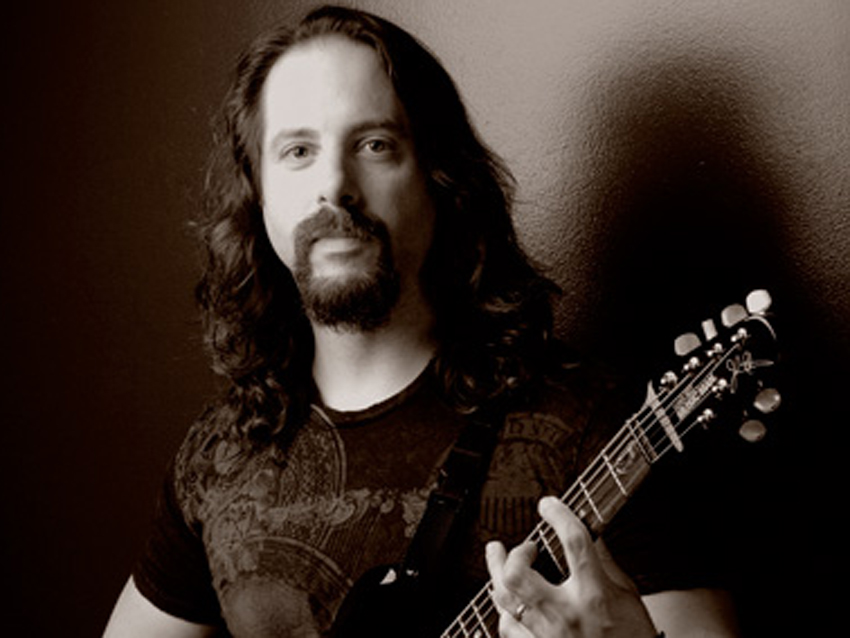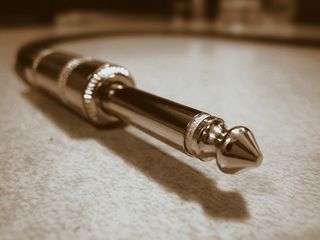
Since he formed the progressive-rock band Dream Theater at Boston's Berklee College Of Music, John Petrucci has become one of the most revered guitarists in the world.
Famous for his high-speed style of alternate picking, Petrucci has dazzled fans of guitar virtuosity, both in his work with Dream Theater, on solo recordings and as a semi-regular touring member of G3, which includes Joe Satriani and Steve Vai, both of whom are no slouches when it comes six-string shredding.
MusicRadar checked in with John Petrucci in Long Island, New York, where the guitarist was knee-deep in the final mixing stages of the next Dream Theater album, due this summer.
We asked him the question on every guitar player's mind: "Hey John, being that you're awesome and stuff, if you could name your top 3 practice tips, what would they be?" With only a moment's thought, these were his answers:
1. Practice with a metronome

"I can't stress this enough," Petrucci says. "Using a metronome allows you to focus. You have this thing clicking, and it's unforgiving, it doesn't care what else is going on around you. 'Tick-tock, tick-tock, play-the-part, play-the-part.'
"To me, there's no question that using a metronome develops your speed and accuracy. If you're learning scales or you're jamming on parts that you can't quite pull off, it's a must.
"Using a metronome will allow you to play cleaner - and that'll make your 'feel' have more, well, 'feeling'" Dream Theater's John Petrucci
"When you use a metronome, you'll start to notice where the notes are falling, if they're on the beat, behind the beat, between the beat, and so on.
Get the MusicRadar Newsletter
Want all the hottest music and gear news, reviews, deals, features and more, direct to your inbox? Sign up here.
"This is very important. So much of the time, guitarists just play and they don't give any real thought to time - they're just happy if they hit the notes. But hitting the notes isn't enough. You have to hit the notes at the right time.
"It's almost funny how fast it improves your playing. In only a few days, you'll find yourself playing cleanly and losing the slop. And after a while, you'll start to develop your own internal metronome, even though that's no substitue for the real thing,
"I've listened to musicians who say that using a metronone makes you robotic, that it decreases your 'feel.' That's ridiculous. Either you have feel or you don't. Feel is one of those intangibles that can't be taught. But if you do have feel, using a metronome will allow you to play cleaner - and that'll make your 'feel' have more, well, 'feeling.'
"I practice with a metronome to this day. All of the solos that I write for Dream Theater, I still sit down and go through them the same old-fashioned way. There's no reason to change now."
2. Divide your parts
"Let's say you're working on a long section of music or a solo," says Petrucci. "It really helps if you break everything down into separate parts instead of looking at it as one long unbroken piece.
"Chop it up. Invariably, there'll be parts you can play better than others. So take the parts that are giving you difficulty and work on them, but work on them independent of the other parts.
"You might have a series of arpeggios that you can't nail. Isolate them. Work on them. Practice them for days on end. Before you know it, you'll become very familiar with how to play them. Then you can incorporate them back into the rest of the solo.
"But - and this is a very big but - the minute you do that, you must practice the entire piece or the whole solo from beginning to end. Think about it: If you're playing it live, that's what's expected of you. You don't get a chance to break things up on stage. So work things out in parts in your practice room, then flesh the whole thing out later. It's a great way to work."
3. Practice unplugged

"Guitar players love to hide behind walls of distortion and sustain that comes from their amps," says Petrucci. "But a lot of the time, it's a way of covering up sloppy playing.
"Unplug yourself. Either play with your guitar unplugged or if you really want to use an amp, turn it way down and bag the distortion and sustain.
"Put the time in. Hear your mistakes. Yeah, it sucks, it's humbling. But if you work on your mistakes, they'll eventually go away"
"You'll be amazed at how quickly you'll develop a smooth, clean style of playing and you'll lose all of your slop.
"If you can play a legato run without sustain, you're golden - and it'll sound ten times more awesome when you can finally plug in, crank it up and wail. But you have to be able to play it accurately and smoothly beforehand.
"When I think of a lot of the players I admire, they could always play their parts without hiding behind distortion and sustain. Put the time in. Hear your mistakes. Yeah, it sucks, it's humbling, it makes you want to throw the guitar out the window. But if you work on your mistakes, they'll eventually go away, and you'll become a strong player."
Joe is a freelance journalist who has, over the past few decades, interviewed hundreds of guitarists for Guitar World, Guitar Player, MusicRadar and Classic Rock. He is also a former editor of Guitar World, contributing writer for Guitar Aficionado and VP of A&R for Island Records. He’s an enthusiastic guitarist, but he’s nowhere near the likes of the people he interviews. Surprisingly, his skills are more suited to the drums. If you need a drummer for your Beatles tribute band, look him up.

“I loved that he showed up with a $200 guitar… It’s humble”: Timothée Chalamet learned to play guitar for his Oscar-nominated role in Bob Dylan biopic on a beginner Yamaha acoustic

“AI is about as close to reality as you can ever imagine”: Gene Simmons discusses the prospect of a virtual KISS and says the “future of entertainment is here”
Most Popular








